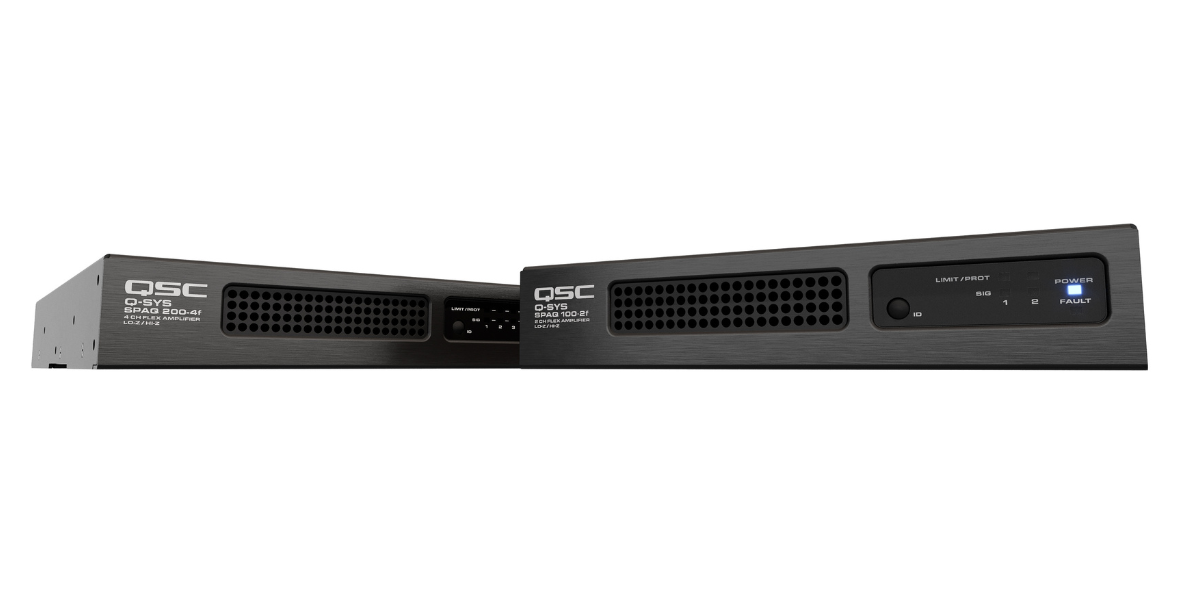Designed to offer adequate amplification and flexible configuration of the Q-SYS system for a wide variety of spaces, the Q-SYS SPA-Q series network amplifiers continue the evolution of the Q-SYS platform.
Meeting/conference rooms, spaces for small conference centers, VIP rooms and more: these are the natural habitats of the new QSC SPA-Q network amplifiers, distributed in Italy by Exhibo. With GPIO connections available for control, two flexible I/O channels (microphone/line inputs or line outputs) and the ability to bridge output connection at 70 Vrms or 100 Vrms, the Q-SYS SPAQ 100-2f (a two-channel) and Q-SYS SPAQ 200-4f (four-channel) provide the tools to centralize processor connectivity across multiple spaces, all based on a native Q-SYS network amplifier. The reduced footprint at half rack width, 1RU in height and the included accessories for multiple mounting options, allow flexible positioning within environments, even inside podiums or behind monitors; in addition, the convection-cooled design ensures silent and continuous performance.
The Q-SYS SPA-Q series network amplifiers are native to Q-SYS, a cloud-managed audio, video and control platform created to offer scalable and flexible AV solutions in the future. The Q-SYS operating system acts as software for managing the Q-SYS SPA-Q series network amplifiers along with a multitude of other Q-SYS products native to the platform, such as the QIO series audio expanders, and integrate seamlessly with the Cores Smaller Q-SYS (such as the Q-SYS Core Nano) to decouple physical I/O from the processor and allow for a high level of system customization and scalability. Furthermore, since the Q-SYS SPA-Q series works on the network, you are completely free to choose between placing the Q-SYS Core processor in the same environment or centralizing it to serve multiple spaces within the building.
Finally, the modern IT architecture and development tools of the Q-SYS platform create an entire ecosystem of third-party devices developed by approved Q-SYS partners, as well as create a worldwide community of Q-SYS developers using open source tools available in Q-SYS.







